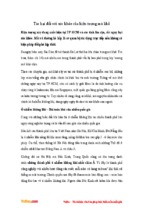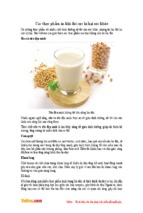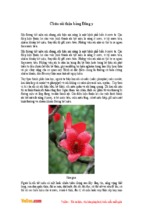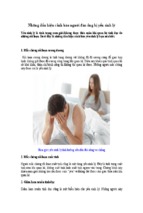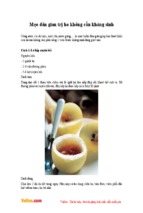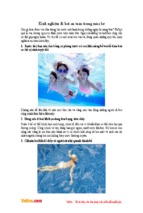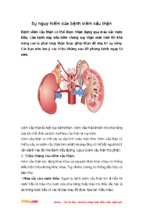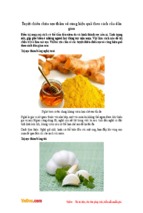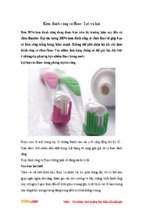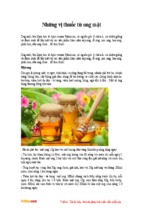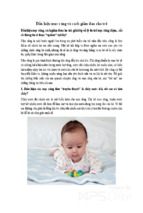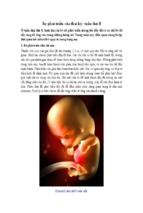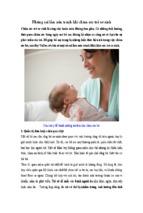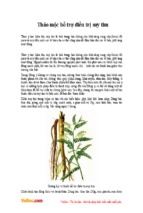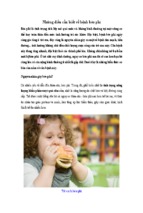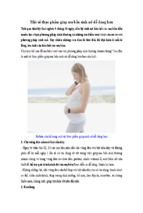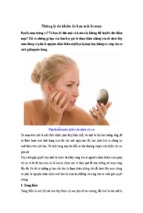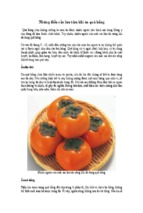Accessed from 128.83.63.20 by nEwp0rt1 on Thu Dec 01 21:48:38 EST 2011
USP 35
Apparatus / 〈16〉 Automated Methods of Analysis 43
Although USP RS undergo retesting on a predefined
schedule to determine continued suitability for use, USP RS
do not carry an expiration date on the label. A lot of USP RS
may be used in its official applications as long as it is listed
as “Current Lot” in the current USP Reference Standards
Catalog or has not reached its Valid Use Date. Upon depletion, the lot is designated in the catalog as “Previous Lot”
and a “Valid Use Date” is assigned. USP publishes the Catalog of Reference Standards bimonthly. The most current version of the catalog can be found on the USP Web site at
www.usp.org. The user is responsible for ascertaining before
use that the USP RS lot of interest currently carries official
status, either as a “Current Lot” or as a “Previous Lot”
within the Valid Use Date.
Apparatus for Tests and
Assays
PROPER USE
Many compendial tests and assays are based on comparison of a test specimen with a USP RS. In such cases, measurements are made on preparations of both the test specimen and the Reference Standard. Where it is directed that a
Standard solution or a Standard preparation be prepared for
a quantitative determination by stepwise dilution or otherwise, it is intended that the Reference Standard substance
be accurately weighed (see Weights and Balances 〈41〉 and
Volumetric Apparatus 〈31〉). Due account should also be
taken of the potential errors associated with weighing small
masses (see also Section 6.50.20.1 Adjustments to Solutions
in the General Notices and Requirements). Reference Standards that are defined on a content-per-container basis are
an exception, as noted above.
USP RS instructions for use include the following:
• As Is: Use without any prior treatment or correction for
volatiles. This is the preferred option, and is selected
whenever valid data indicate that the volatiles content
is constant over time.
• Dry Before Use: Use immediately after drying under
stated conditions. Drying should not be performed in
the original container. A portion of the material should
be transferred to a separate drying vessel.
• Determine Water Content Titrimetrically At Time of
Use: Use with a correction for the water content or the
loss on drying, determined on a separate portion of
material. Where the titrimetric determination of water is
required at the time a Reference Standard is to be used,
proceed as directed for Method I under Water Determination 〈921〉. Instrumental or microanalytical methods
are acceptable for this purpose. When using typical
amounts (about 50 mg of the Reference Standard), titrate with a 2- to 5-fold dilution of the reagent. Where
the determination of the loss on drying on a separate
portion of USP RS is required, proceed as directed on
the label. Sample sizes smaller than those required in
the general test chapter Loss on Drying 〈731〉 may be
used for a USP RS provided that the user can obtain a
sufficiently accurate result.
Whenever the labeled directions for use require drying or
a correction for volatiles, it should be performed at the time
of use. Further experimental details should be controlled by
the user’s Standard Operating Procedures and good laboratory practices.
STORAGE
USP RS should be stored in the packaging configuration
provided by USP (e.g., vials that are packaged in hermetically sealed bags). When special storage conditions are specified, label directions should be followed. Unopened vials
should be stored as indicated on the label. The user is responsible for ensuring that the contents of opened vials
continue to be suitable for their intended use and that value
assignment and uncertainty information are maintained.
〈16〉 AUTOMATED METHODS OF
ANALYSIS
Where a sufficiently large number of similar units are to
be subjected routinely to the same type of examination, automated methods of analysis may be far more efficient and
precise than manual methods. Such automated methods
have been found especially useful in testing the content uniformity of tablets and capsules and in facilitating methods
requiring precisely controlled experimental conditions. Many
manufacturing establishments, as well as the laboratories of
regulatory agencies, have found it convenient to utilize automated methods as alternatives to Pharmacopeial methods
(see Procedures under Tests and Assays in the General Notices
and Requirements). In addition, the detection system and
calculation of results for automated methods are often
computerized.
Before an automated method for testing an article is
adopted as an alternative, it is advisable to ascertain that
the results obtained by the automated method are equivalent in accuracy and precision to those obtained by the prescribed Pharmacopeial method, bearing in mind the further
principle stated in the General Notices and Requirements that
“where a difference appears, or in the event of dispute, only
the result obtained by the procedure given in this Pharmacopeia is conclusive.”
It is necessary to monitor the performance of the automated analytical system continually by assaying standard
preparations of known composition frequently interspersed
among the test preparations. Where immiscible solvents are
employed in the automated apparatus for rapid extractions,
they are often separated for analysis before complete extraction is attained, and the chemical reactions utilized in automated methods rarely are stoichiometric. Both the accuracy
and the precision of the determinations depend upon precise adjustment of the equipment, so maintained that all
standard and test preparations are exposed to identical
physical and chemical manipulations for identical time intervals. Excessive variability in the response of the standard
preparations indicates that the analytical system is malfunctioning and that the test results are therefore invalid. However, where automated systems are shown to operate reliably, the precision of the automated method may surpass
that of the manual procedure employing the same basic
chemistry.
Many of the manual methods given in this Pharmacopeia
can be adapted for use in automated equipment incorporating either discrete analyzers or continuous flow systems and
operating under a variety of conditions. On the other hand,
an analytical scheme devised for a particular automated system may not be readily transposable for use either in a
manual procedure or in other types of automated
equipment.
The apparatus required for manual methods is, in general,
less complicated than the apparatus of automated systems,
even those systems used for the direct automated measurement of a single analyte (i.e., the substance being determined or analyzed for) in a binary mixture. However, because of their versatility, automated systems designed for
the rapid determination of a specified substance often can
be readily modified by the addition of suitable modules and
accessories to permit the determination of one or more additional substances in a dosage form. Such extended sys-
Official from May 1, 2012
Copyright (c) 2011 The United States Pharmacopeial Convention. All rights reserved.
Accessed from 128.83.63.20 by nEwp0rt1 on Thu Dec 01 21:48:38 EST 2011
44 〈16〉 Automated Methods of Analysis / Apparatus
tems have been utilized, for example, in the automated
analysis of articles containing both estrogens and
progestogens.
The accompanying pertinent diagrams represent examples
of automated methods. Diagrams for official methods are
reproduced here rather than in the individual monographs.
The descriptions of the procedural details in these methods
exemplify the general approach in automated analysis applicable to dosage forms. It should be noted that the diagrams, with many minutiae, are an indispensable part of the
directions for conducting the analysis.
DIAGRAMS
The diagrams shown below are arranged in alphabetic order by the name of the drug first mentioned, where the
diagram is for a procedure for a specific article. Where there
is no procedure in this chapter for a particular diagram, reference is to be made to the named monograph.
ANTIBIOTICS—HYDROXYLAMINE ASSAY
The following procedure is applicable for the assay of
those Pharmacopeial antibiotics, such as cephalosporins and
penicillins, that possess the beta-lactam structure.
Apparatus—Automatic analyzer consisting of (1) a liquid
sampler, (2) a proportioning pump, (3) suitable spectrophotometers equipped with matched flow cells and analysis capability at 480 nm, (4) a means of recording spectrophotometric readings, and/or computer for data retrieval and
calculation, and (5) a manifold consisting of the components illustrated in the accompanying pertinent diagram.
USP 35
Ferric Nitrate Solution—Suspend 233 g of ferric nitrate in
about 600 mL of water, add 2.8 mL of sulfuric acid, stir
until the ferric nitrate is dissolved, add 1 mL of polyoxyethylene (23) lauryl ether, dilute with water to 1000 mL,
and mix.
USP Reference Standards 〈11〉—Use the USP Reference
Standard as directed in the individual monograph.
Standard Preparation—Unless otherwise directed in the
individual monograph, dissolve an accurately weighed quantity of the USP Reference Standard in water, and quantitatively dilute with water to obtain a solution having a known
concentration of about 1 mg per mL.
Assay Preparation—Unless otherwise directed in the individual monograph, using the specimen under test, prepare as directed under Standard Preparation.
Procedure—With the sample line pumping water, the
other lines pumping their respective reagents, and the spectrophotometer set at 480 nm, standardize the system until a
steady absorbance baseline has been established. Transfer
portions of the Standard Preparation and the Assay Preparation to sampler cups, and place in the sampler. Start the
sampler, and conduct determinations of the Standard Preparation and the Assay Preparation typically at the rate of 40
per hour, using a ratio of about 2:1 for sample and wash
time. Calculate the potency by the formula given in the
individual monograph, in which C is the concentration, in
mg per mL, of USP Reference Standard in the Standard Preparation; P is the potency, in µg per mg, of the USP Reference Standard; and AU and AS are the absorbances, corrected for the absorbances of the respective blanks, of the
solutions from the Assay Preparation and the Standard Preparation, respectively.
ASSAY FOR ASCORBIC ACID
Diagram for Automated Hydroxylamine Assay for Antibiotics
Reagents—
Hydroxylamine Hydrochloride Solution—Dissolve 20 g of
hydroxylamine hydrochloride in 5 mL of polyoxyethylene
(23) lauryl ether solution (1 in 1000), and add water to
make 1000 mL.
Acetate Buffer—Dissolve 173 g of sodium hydroxide and
20.6 g of sodium acetate in water to make 1000 mL. Dilute
75 mL of this solution with water to 500 mL, and mix.
The following procedure is applicable for the assay of ascorbic acid in Pharmacopeial multivitamin-minerals combination products (solid and liquid dosage forms) that contain
components that interfere in other methods of assay.
Apparatus—Automatic analyzer consisting of (1) a liquid
sampler; (2) a proportioning pump; (3) a suitable fluorimeter equipped with a flow cell and filters: primary—335 nm,
and secondary—426 nm; (4) a means of recording fluorimeter readings; and (5) a manifold consisting of the components illustrated in the accompanying pertinent diagram.
Reagents—
Extracting Solution—Dissolve 600 g of metaphosphoric
acid in 1200 mL of water. Add 400 mL of glacial acetic
acid, dilute with water to 2000 mL, and mix.
Dilute Extracting Solution—Dissolve 60 g of metaphosphoric acid in 1200 mL of water. Add 160 mL of glacial
acetic acid, dilute with water to 2000 mL, and mix.
Surfactant Solution—Prepare a 30% solution of polyoxyethylene (23) lauryl ether by melting 150 g in a container
on a steam bath and slowly adding approximately 250 mL
of water with continuous stirring. Cool and dilute with
water to make 500 mL.
Wash Solution—Add 1 mL of Surfactant Solution to 3000
mL of Dilute Extracting Solution, and mix.
Carbon Extraction Solution—Dissolve 60 g of metaphosphoric acid in 1200 mL of water. Add 160 mL of glacial
acetic acid, and mix. Add 33 g of activated charcoal powder, mix, and dilute with water to 2000 mL. Continually
mix the solution at a rate that maintains homogeneity.
Sodium Acetate Solution—Dissolve 500 g of sodium acetate trihydrate in water to make 1000 mL, mix, and filter.
Phenylenediamine Solution—Dissolve 200 mg of o-phenylenediamine dihydrochloride in water to make 1000 mL, and
mix. Prepare fresh daily.
Official from May 1, 2012
Copyright (c) 2011 The United States Pharmacopeial Convention. All rights reserved.
Accessed from 128.83.63.20 by nEwp0rt1 on Thu Dec 01 21:48:38 EST 2011
Apparatus / 〈16〉 Automated Methods of Analysis 45
USP 35
Diagram for Automated Ascorbic Acid
USP Reference Standards 〈11〉—USP Ascorbic Acid RS.
Standard Stock Solution—Dissolve an accurately
weighed quantity of USP Ascorbic Acid RS in Dilute Extracting Solution to obtain a solution having a known concentration of about 0.1 mg per mL.
Standard Preparations—Transfer 10.0, 20.0, 30.0, 40.0,
and 50.0 mL of Standard Stock Solution to separate 100-mL
volumetric flasks, dilute the contents of each flask with Carbon Extracting Solution to volume, mix, and filter to obtain
Standard Preparations A, B, C, D, and E having known concentrations of 10 µg, 20 µg, 30 µg, 40 µg, and 50 µg of
USP Ascorbic Acid RS per mL, respectively.
Assay Preparation—
For Liquid Preparations—Transfer an accurately measured
volume of the liquid preparation, equivalent to 150 mg of
ascorbic acid, to a 100-mL volumetric flask. Add 10 mL of
Extracting Solution and 6 mL of glacial acetic acid. Dilute
with water to volume, and mix. Transfer 2.0 mL of this solution to a 100-mL volumetric flask, dilute with Carbon Extracting Solution to volume, mix, and filter.
For Tablet Preparations—Weigh and finely powder not
fewer than 20 Tablets. Transfer an accurately weighed quantity of the powder, equivalent to about 250 mg of ascorbic
acid, to a 250-mL volumetric flask. Add 25 mL of Extracting
Solution, 15 mL of glacial acetic acid, and about 100 mL of
water, and swirl to mix. Heat for 15 minutes in a 70° water
bath, swirling after about 7 minutes. Cool, and dilute with
water to volume. Transfer 2.0 mL of this solution to a 100mL volumetric flask, dilute with Carbon Extracting Solution to
volume, mix, and filter.
For Capsule Preparations—Empty the contents, if necessary by cutting open with a sharp blade, of not fewer than
20 Capsules in a suitable container, and mix thoroughly.
Transfer a portion of the capsule contents, equivalent to
about 250 mg of ascorbic acid, to a 250-mL volumetric
flask, and proceed as directed for Tablets above, beginning
with “Add 25 mL of .”
Procedure—With the sample line pumping the Wash Solution, the other lines pumping their respective reagents,
and the fluorimeter equipped with proper filters, standardize
the system by pumping until a steady baseline has been
established. Transfer portions of the Standard Preparations
and the Assay Preparation to sample cups, and place in the
sampler. Start the sampler, and conduct determinations of
each Standard Preparation and the Assay Preparation at the
rate of 40 per hour, using a ratio of about 2:1 for sample
and wash time. Derive a standard response line by plotting
Official from May 1, 2012
Copyright (c) 2011 The United States Pharmacopeial Convention. All rights reserved.
Accessed from 128.83.63.20 by nEwp0rt1 on Thu Dec 01 21:48:38 EST 2011
46 〈16〉 Automated Methods of Analysis / Apparatus
USP 35
Diagram for Automated Aspirin Determinative Step of the Dissolution Test for Aspirin, Alumina, and Magnesium Oxide
Tablets
the respective Standard Preparation concentration (10.0,
20.0, 30.0, 40.0, and 50.0 µg per mL) versus transmittance.
From the measured transmittance and the standard response line, determine the ascorbic acid concentration, C, in
µg per mL, of the Assay Preparation. Calculate the quantity,
in mg, of C6H8O6 in the portion of liquids, tablets, or capsule contents taken by the appropriate formula:
For Liquids: 5C/V in which V is the volume, in mL, of
liquid preparation taken to prepare the Assay Preparation.
For Tablets or Capsules: 12.5C.
ASSAY FOR IODIDE
Apparatus—Automatic analyzer consisting of (1) a liquid
sampler, (2) a proportioning pump, (3) a heating bath, (4)
a suitable colorimeter equipped with a 2.0- × 50-mm flow
cell and analysis capability at 420 nm, (5) a means of recording colorimetric readings, and (6) a manifold consisting
of the components illustrated in the accompanying pertinent diagram.
Reagents—
Acetic Acid Carrier Solution—Transfer 3.0 mL of glacial acetic acid to a 2000-mL volumetric flask containing about 800
mL of water. Add 2 mL of polyoxyethylene (23) lauryl ether,
and dilute with water to volume.
Surfactant Solution—Prepare a 30% solution of polyoxyethylene (23) lauryl ether by melting 150 g in a container
on a steam bath and slowly adding approximately 250 mL
of water with continuous stirring. Cool, and dilute with
water to make 500 mL.
Arsenious Acid Solution—Transfer 19.6 g of arsenic trioxide
and 14.0 g of sodium hydroxide to a 2000-mL volumetric
flask. Add about 150 mL of water, and dissolve with stirring.
Dilute with water to a volume of about 800 mL, and add 66
mL of sulfuric acid. Cool to room temperature. Transfer 50.0
g of sodium chloride to the solution, and mix to dissolve.
Add 2 mL of Surfactant Solution, dilute with water to volume, mix, and filter.
Ceric Ammonium Sulfate Solution—Transfer 12.65 g of ceric ammonium sulfate to a 1000-mL volumetric flask. Add
about 700 mL of water followed by 100 mL of sulfuric acid,
swirling to mix. Heat to dissolve, and cool to room temperature. Add 1 mL of Surfactant Solution, dilute with water to
volume, mix, and filter.
3% Acetic Acid Solution—Transfer 30 mL of glacial acetic
acid to a 1000-mL volumetric flask containing about 300
mL of water. Dilute with water to volume, and mix.
Standard Preparations—
Standard Stock Solution—Transfer an accurately weighed
quantity of 1.3080 g of potassium iodide, previously dried
for 24 hours at 105°, to a 1000-mL volumetric flask. Dilute
with water to volume, and mix to obtain a solution having
an iodide concentration of 1000 µg per mL.
Intermediate Standard Solution—Quantitatively dilute a
suitable volume of Standard Stock Solution with water to obtain a solution having an iodide concentration of 1 µg per
mL.
Working Standard Preparations—Transfer 2.0, 4.0, 6.0,
8.0, and 10.0 mL of Intermediate Standard Solution to separate 100-mL volumetric flasks. Add 5 mL of 3% Acetic Acid
Solution. Dilute the contents of each flask with water to volume, and mix to obtain Standard Preparations A, B, C, D,
and E having known iodide concentrations of about 0.02 µg
per mL, 0.04 µg per mL, 0.06 µg per mL, 0.08 µg per mL,
and 0.1 µg per mL, respectively.
Assay Preparation—
For Liquid Preparations—Transfer an accurately measured
volume of the liquid preparation, equivalent to 16 µg of
iodide, to a 200-mL volumetric flask. Add 10 mL of 3%
Acetic Acid Solution to dissolve, dilute with deionized water
to volume, mix, and filter. Transfer 10.0 mL of this solution
to a 100-mL volumetric flask, add 5.0 mL of 3% Acetic Acid
Solution, dilute with deionized water to volume, mix, and
filter to obtain a solution having an iodide concentration of
about 0.08 µg per mL.
For Tablet Preparations—Weigh and finely powder not
fewer than 20 Tablets. Transfer an accurately weighed quantity of the powder, equivalent to about 250 µg of iodide, to
Official from May 1, 2012
Copyright (c) 2011 The United States Pharmacopeial Convention. All rights reserved.
Accessed from 128.83.63.20 by nEwp0rt1 on Thu Dec 01 21:48:38 EST 2011
Apparatus / 〈16〉 Automated Methods of Analysis 47
USP 35
Diagram for Automated Iodide Assay
a 250-mL volumetric flask. Add 100 mL of 1 N hydrochloric
acid, and mix with the aid of sonication for 30 minutes.
Dilute with water to volume, mix, and filter. Transfer 8.0 mL
of the filtered solution to a 100-mL volumetric flask, add 5
mL of 3% Acetic Acid Solution, dilute with water to volume,
and mix to obtain a solution having an iodide concentration
of about 0.08 µg per mL.
For Capsule Preparations—Empty the contents, if necessary by cutting open with a sharp blade, of not fewer than
20 Capsules into a suitable container, and mix thoroughly.
Transfer a portion of the capsule contents, equivalent to
about 250 µg of iodide, to a 250-mL volumetric flask and
proceed as directed for Tablets above, beginning with “Add
100 mL of .”
Procedure—With the sample line pumping the Acetic
Acid Carrier Solution, the other lines pumping their respective reagents, and the colorimeter equipped with 420-nm
filters, standardize the system until a steady baseline has
been established. Transfer portions of the Standard Preparations and the Assay Preparation to the sampler cups, and
place in the sampler. Start the sampler, and conduct determinations of each Standard Preparation and the Assay Preparation at the rate of 30 per hour, using a ratio of about 1:4
for sample and wash time. Derive a standard response line
by plotting the respective Standard Preparation concentration (0.02, 0.04, 0.06, 0.08, and 0.10 µg per mL) versus
absorbance. [NOTE—This is an indirect absorbance relationship: the greater the iodide amount, the less the absorbance.] From the measured transmittance and the standard
response line, determine the iodide concentration, C, in µg
per mL, of the Assay Preparation. Calculate the quantity, in
µg, of iodide in the portion of liquids, tablets, or capsules
contents taken by the formula:
For Liquids: 2000C/V in which V is the volume, in mL,
of the liquid preparation taken to prepare the Assay
Preparation.
For Tablets and Capsules: 3125C.
CONTENT UNIFORMITY OF NITROGLYCERIN
TABLETS
This is not to be considered as the official method. It is
detailed here for further illustration of descriptions of automated methods.
Apparatus—Automatic analyzer consisting of (1) a liquid
sampler, (2) a proportioning pump, (3) a heating bath, (4)
a suitable spectrophotometer equipped with a 5-mm flow
cell and analysis capability at 545 nm, (5) a means of recording spectrophotometric readings, and (6) a manifold
consisting of the components illustrated in the accompanying pertinent diagram.
Reagents—
1 Percent Strontium Hydroxide Solution—Dissolve 20.0 g of
strontium hydroxide [Sr(OH)2 · 8H2O] in 1800 mL of carbon
dioxide-free water, heating if necessary. Cool to room temperature, dilute with carbon dioxide-free water to 2000 mL,
and mix. Allow to stand overnight, and filter. Store the clear
solution in tightly closed containers, protected from carbon
dioxide.
0.3 Percent Procaine Hydrochloride Solution—Dissolve 3.0 g
of procaine hydrochloride in water to make 1000 mL.
0.1 Percent N-(1-Naphthyl)ethylenediamine Dihydrochloride
Solution—Dissolve 1.0 g of N-(1-naphthyl)ethylenediamine
dihydrochloride in water to make 1000 mL. Prepare fresh
each week.
Official from May 1, 2012
Copyright (c) 2011 The United States Pharmacopeial Convention. All rights reserved.
Accessed from 128.83.63.20 by nEwp0rt1 on Thu Dec 01 21:48:38 EST 2011
48 〈16〉 Automated Methods of Analysis / Apparatus
USP 35
Diagram for Automated Assay for Nitroglycerin Tablets
Standard Preparation—Dissolve an accurately weighed
portion of 10% nitroglycerin-betalactose absorbate, previously standardized, in water, and dilute quantitatively and
stepwise with water to obtain a solution having a known
concentration of about 30 µg per mL.
Test Preparation—Dissolve 1 Nitroglycerin Tablet in
water to obtain a solution having a concentration of about
30 µg of nitroglycerin per mL.
Procedure—With the sample line pumping water, the
other lines pumping their respective reagents, and the spectrophotometer set at 545 nm, standardize the system by
pumping until a steady absorbance baseline has been established. Transfer portions of the Standard Preparation and the
Test Preparation to sampler cups, and place in the sampler.
Start the sampler, and conduct determinations of the Standard Preparation and the Test Preparation at a rate of 30 per
hour, using a ratio of 1:1 for sample and wash time. First,
run two standards, discarding the first value, then continue
the run using one standard after each five samples, recording the absorbance values. Calculate the quantity, in mg, of
C3H5N3O9 in the Tablet taken by the formula:
(T/D)C(AU/AS)
in which T is the labeled quantity, in mg, of nitroglycerin in
the Tablet; D is the concentration, in µg per mL, of nitroglycerin in the solution from the Tablet, based on the labeled quantity per Tablet and the extent of dilution; C is the
concentration, in µg per mL, of nitroglycerin in the Standard
Preparation; AU is the absorbance of the Test Preparation; and
AS is the average of the absorbances of the two Standard
Preparations that bracket the Test Preparation.
Official from May 1, 2012
Copyright (c) 2011 The United States Pharmacopeial Convention. All rights reserved.
Accessed from 128.83.63.20 by nEwp0rt1 on Thu Dec 01 21:48:38 EST 2011
USP 35
Apparatus / 〈16〉 Automated Methods of Analysis 49
Diagram of Dissolution Test Method for Erythromycin Ethylsuccinate Tablets Labeled as Chewable
Diagram for Automated Drug Release and Content Uniformity Test for Propranolol Hydrochloride and
Hydrochlorothiazide Extended-Release Capsules
Official from May 1, 2012
Copyright (c) 2011 The United States Pharmacopeial Convention. All rights reserved.
Accessed from 128.83.63.20 by nEwp0rt1 on Thu Dec 01 21:48:38 EST 2011
50 〈16〉 Automated Methods of Analysis / Apparatus
USP 35
Diagram for Automated Dissolution and Content Uniformity Test for Reserpine Tablets
Diagram for Automated Content Uniformity Test for Reserpine, Hydralazine Hydrochloride, and Hydrochlorothiazide Tablets
Official from May 1, 2012
Copyright (c) 2011 The United States Pharmacopeial Convention. All rights reserved.
Accessed from 128.83.63.20 by nEwp0rt1 on Thu Dec 01 21:48:38 EST 2011
Apparatus / 〈31〉 Volumetric Apparatus 51
USP 35
〈21〉 THERMOMETERS
Temperature reading devices suitable for Pharmacopeial
tests conform to specifications that are traceable to a NIST
standard. Temperature reading devices may be of the liquidin-glass type or an analog or digital temperature indicator
type, such as a resistance temperature device, thermistor, or
thermocouple.
An analog or digital temperature indicator consists of a
temperature probe, which houses a sensor. The probe is attached to a meter capable of translating a signal in ohms or
millivolts into a temperature reading. The temperature
probe portion of the analog or digital temperature indicator
that is submerged in the medium whose temperature is being measured must be made of inert material. Standardization of analog and digital temperature indicator devices is
performed on an established testing frequency with a temperature standard traceable to NIST. In the selection of a
temperature reading device, careful consideration of the
condition under which it is to be used is essential.
Liquid-in-glass thermometers may be standardized for total immersion, partial immersion, or full immersion. Insofar
as practicable, each thermometer should be employed according to the condition of immersion under which it was
standardized. Standardization of thermometers is performed
on an established testing frequency with a temperature
standard traceable to NIST. Refer to the current issue of
ASTM standards E1. Standardization of liquid-in-glass thermometers for total immersion involves immersion of the
thermometer to the top of the liquid column, with the remainder of the stem and the upper expansion chamber exposed to ambient temperature. Standardization for partial
immersion involves immersion of the thermometer to the
indicated immersion line etched on the front of the thermometer, with the remainder of the stem exposed to ambient temperature. Standardization for full immersion involves
immersion of the entire thermometer, with no portion of
the stem exposed to ambient temperature. For use under
other conditions of immersion, an emergent stem correction
is necessary to obtain correct temperature readings.
less than 30% of the nominal volume. Where less than 10
mL of titrant is to be measured, a 10-mL buret or a microburet generally is required.
The design of volumetric apparatus is an important factor
in assuring accuracy. For example, the length of the graduated portions of graduated cylinders should be not less than
five times the inside diameter, and the tips of burets and
pipets should restrict the outflow rate to not more than 500
µL per second.
Standards of Accuracy—The capacity tolerances for volumetric flasks, transfer pipets, and burets are those accepted
by the National Institute of Standards and Technology (Class
A),1 as indicated in the accompanying tables. Use Class A
volumetric apparatus unless otherwise specified in the individual monograph. For plastic volumetric apparatus the accepted capacity tolerances are Class B.2
The capacity tolerances for measuring (i.e., “graduated”)
pipets of up to and including 10-mL capacity are somewhat
larger than those for the corresponding sizes of transfer
pipets, namely, 10, 20, and 30 µL for the 2-, 5-, and 10-mL
sizes, respectively.
Transfer and measuring pipets calibrated “to deliver”
should be drained in a vertical position and then touched
against the wall of the receiving vessel to drain the tips.
Volume readings on burets should be estimated to the nearest 0.01 mL for 25- and 50-mL burets, and to the nearest
0.005 mL for 5- and 10-mL burets. Pipets calibrated “to
contain” are called for in special cases, generally for measuring viscous fluids like syrups; however, a volumetric flask
may be substituted for a “to contain” pipet. In such cases,
the pipet or flask should be washed clean, after draining,
and the washings added to the measured portion.
Volumetric Flasks
Designated
volume, mL
Limit of error, mL
Limit of error, %
10
25
50
100
250
500
1000
0.02
0.03
0.05
0.08
0.12
0.20
0.30
0.20
0.12
0.10
0.08
0.05
0.04
0.03
Transfer Pipets
Designated
volume, mL
Limit of error, mL
Limit of error, %
〈31〉 VOLUMETRIC APPARATUS
Most of the volumetric apparatus available in the United
States is calibrated at 20°, although the temperatures generally prevailing in laboratories more nearly approach 25°. To
minimize volumetric error, the temperature should be the
same for the volumetric apparatus, the material being prepared, the solvents being used to prepare the volumetric
solutions, the area in which they are prepared, and the final
volume adjustment.
Use—To attain the degree of precision required in many
Pharmacopeial assays involving volumetric measurements
and directing that a quantity be “accurately measured,” the
apparatus must be chosen and used with care. A buret
should be of such size that the titrant volume represents not
1
2
5
10
25
50
100
0.006
0.006
0.01
0.02
0.03
0.05
0.08
0.60
0.30
0.20
0.20
0.12
0.10
0.08
Burets
Designated volume, mL
Subdivisions, mL
Limit of error, mL
1
2
10 (“micro”
type)
0.02
0.02
25
50
0.1
0.03
0.1
0.05
See ASTM 288-06, ASTM E287-02, ASTM E1189-00, and ASTM E969-02.
See ASTM E 288, Fed. Spec. NNN-F-289, and ISO Standard 384.
Official from May 1, 2012
Copyright (c) 2011 The United States Pharmacopeial Convention. All rights reserved.
- Xem thêm -

